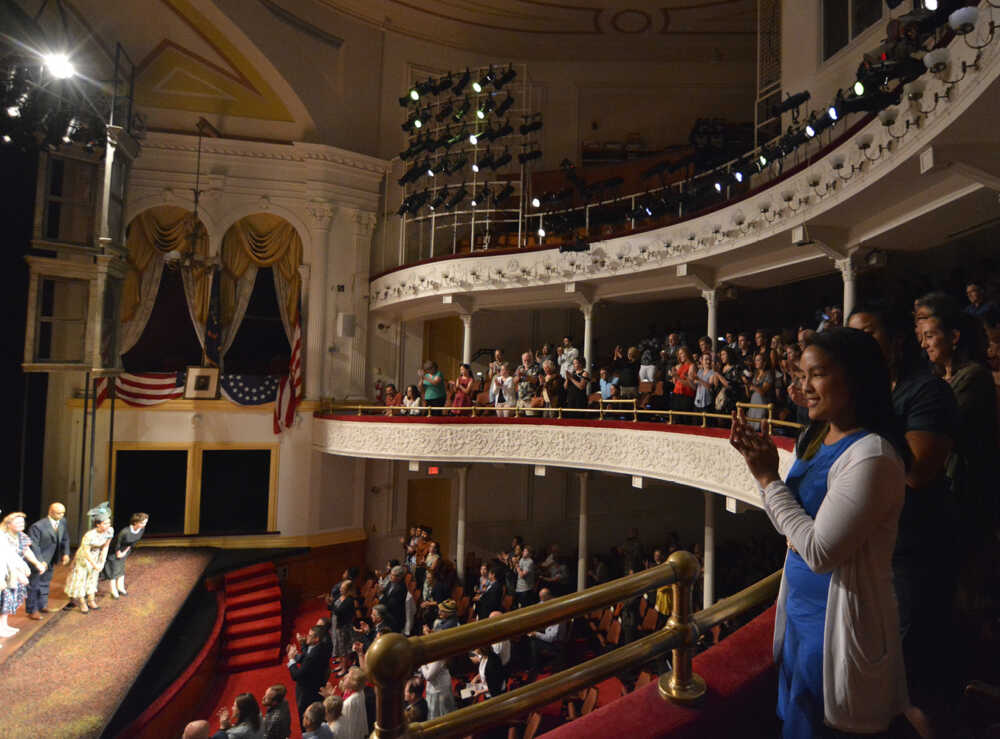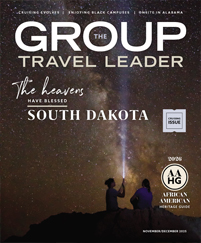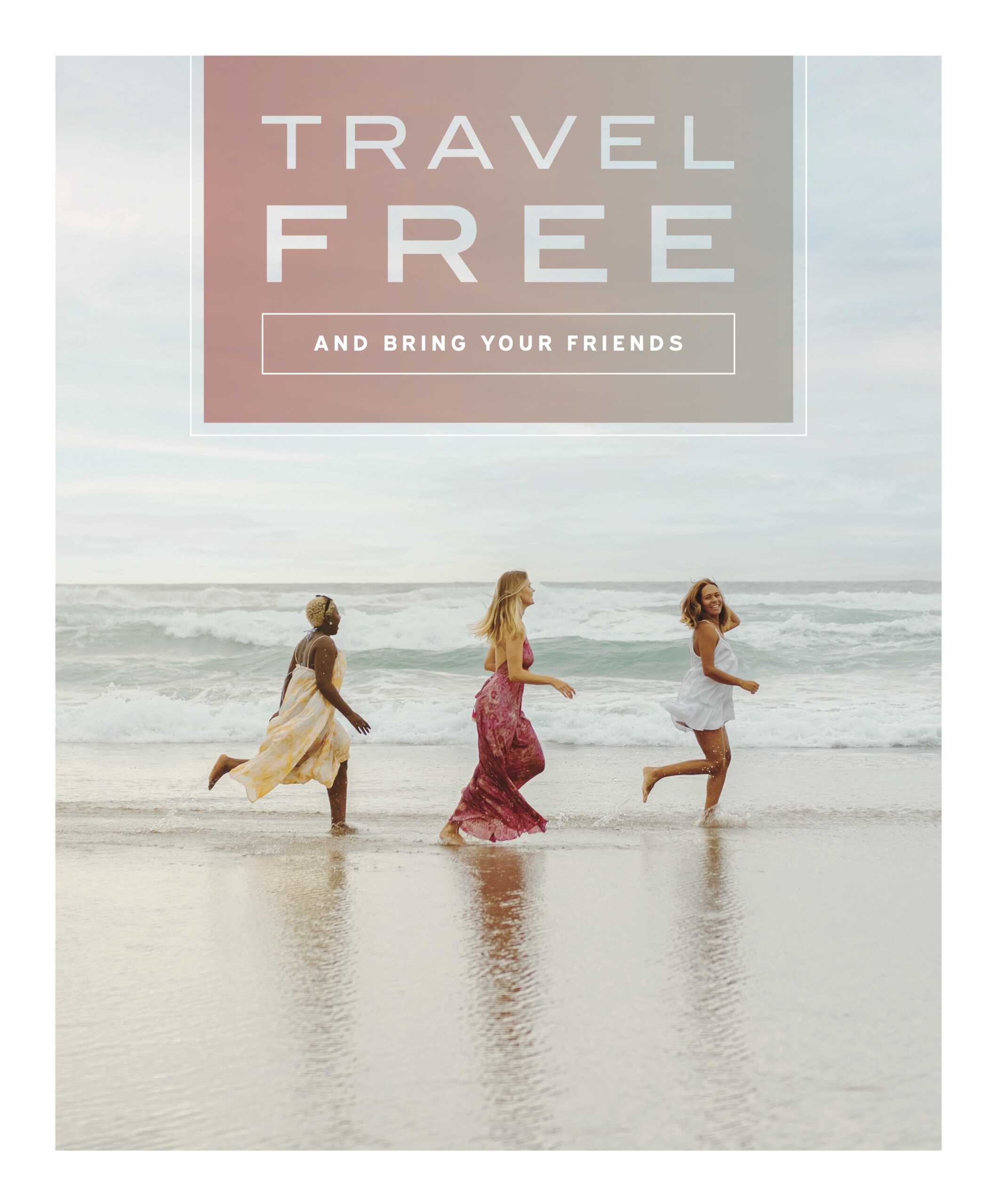Sponsored Content
To have a lasting and national impact, leaders of the Civil Rights Movement knew there was no better place to march, to protest, to challenge laws and to push for change than the nation’s capital, where they could make their case to lawmakers, judges and other change makers.
That reality means that the District of Columbia has a significant number of U.S. Civil Rights Trail (USCRT) sites, where the stories of Americans who fought for freedom and equality are preserved and shared.
Combine those sites with the many other museums and memorials in the District that celebrate the African American experience for a tour that will educate, enrich and entertain.

Historic Sites

Lincoln Memorial and Martin Luther King Jr. Memorial
The National Mall, home to three USCRT sites, is a natural place to start a civil rights themed tour.
The Lincoln Memorial and the Martin Luther King Jr. Memorial, a mile apart at the Mall’s west end, remember two men who are forever linked by their determination to ensure freedom and equality for African Americans.
It was from the steps of the Lincoln Memorial that King delivered his “I Have a Dream” speech in 1963, and he wasn’t the first or the last to use the memorial as a platform for the Civil Rights Movement. The words “I have a dream” are carved into the spot where he stood.
In July 2026, a new museum will open at the Lincoln Memorial in the cavernous space beneath Lincoln’s statue, part of a $69 million project designed to expand on the memorial’s story and its connection to civil rights. There’ll be 15,000 square feet of exhibits, a bookstore and new restrooms. Until then, the memorial remains open, with temporary restrooms and a bookstore.
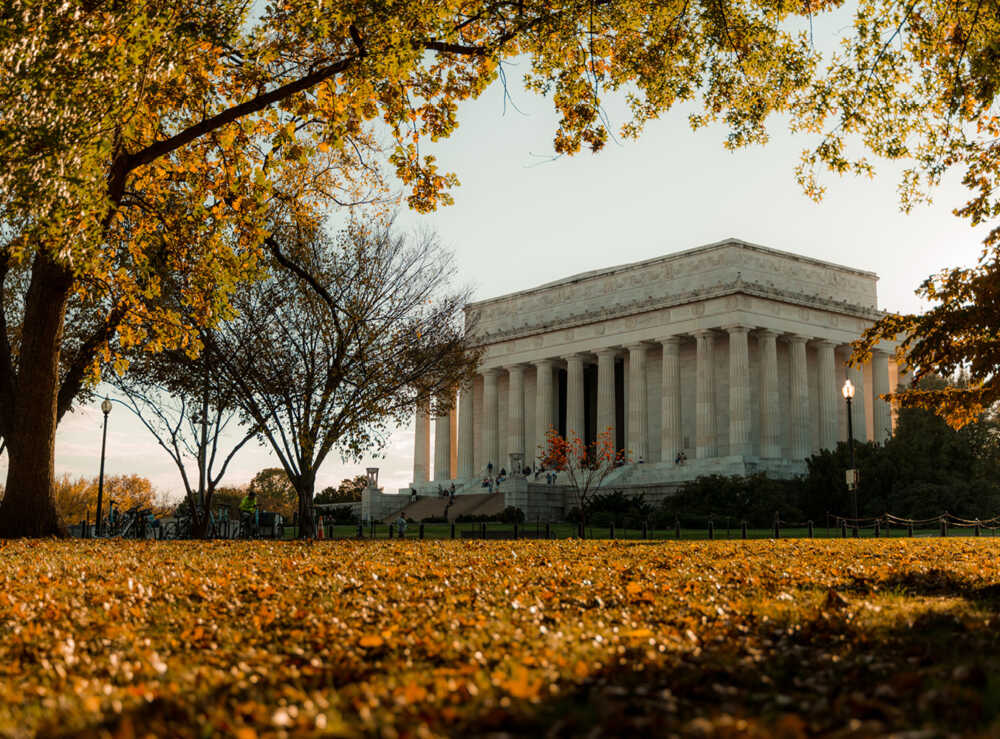
Lincoln and King were men of words, and passages from their speeches are incorporated in their memorials. Lincoln’s Gettysburg Address and second Inaugural Address are carved into the walls that flank his seated statue. At the Martin Luther King Jr. Memorial, quotes from 14 of his speeches are inscribed on walls near his 30-foot statue. A line from one, “Out of the mountain of despair, a stone of hope,” inspired the memorial’s design. To enter the memorial, visitors walk through a boulder, “the mountain of despair,” and then beyond, see King’s likeness emerging from another boulder, the “stone of hope.”
Both the Lincoln and King memorials are free and always open. Throughout the day and into the evening, park rangers answer questions and provide insights. On some weekends, the National Park Service offers guided tours.
Insider Tip: Call the National Park Service Mall Operations at 202-426-6841 to ask about motorcoach parking.
National Museum of African American History and Culture
America’s first Black president, Barack Obama, led the opening ceremony in 2016 for the National Museum of African American History and Culture, a powerful way to show the impact the Civil Rights Movement has had for African Americans.
The museum though, doesn’t tiptoe around what an uphill climb it has been, and it promises to share “the unvarnished truth,” of the African American experience. Its exhibits about civil rights are among its most illuminating. For example, “Creating a Segregated Society” describes how when the South passed laws to restrict the freedoms of former slaves, the push for civil rights began, culminating with peaceful protests and marches, challenges to segregation, and public outrage over violence aimed at African Americans, like the murder of Emmett Till.
Among the museum’s collection are remnants from the civil rights movement, like stools from the Greensboro, North Carolina, soda fountain sit-in.
Most visitors spend at least a couple of hours, walking about a mile, to take in the exhibits. It’s no surprise then that many refuel at the museum’s Sweet Home Café, which specializes in dishes often served in African American homes like barbecue, fried chicken and blackeyed peas.
Like many Smithsonian museums, reserved time-entry passes are required, and admission is free. To buy group meal vouchers in advance or ask other group tour questions, contact group sales.
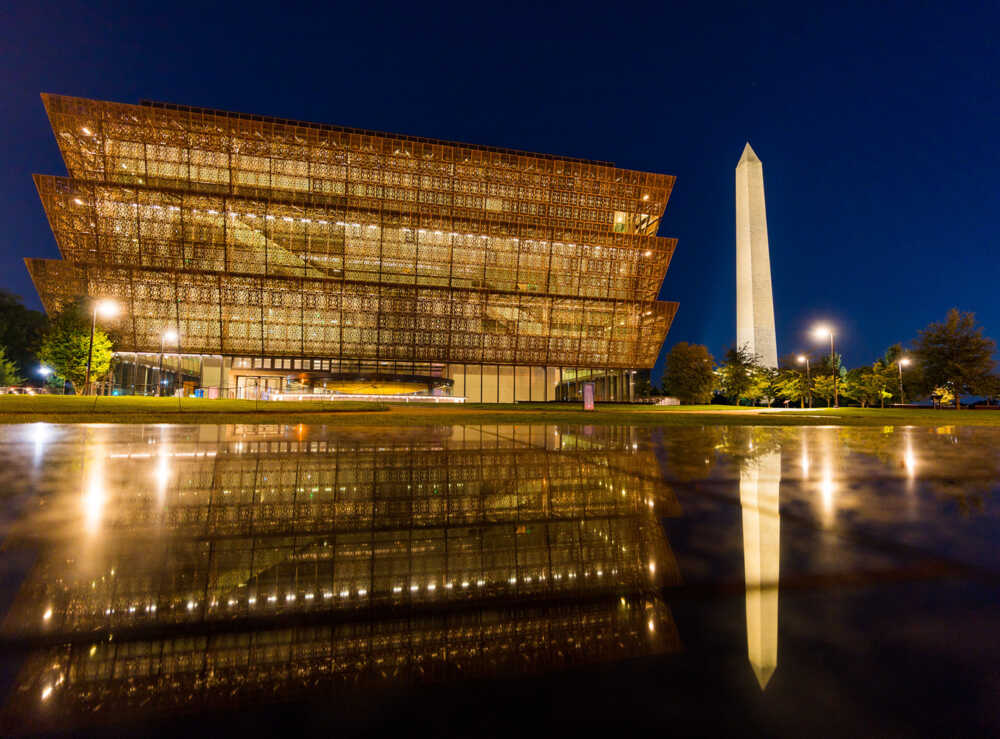
Insider Tip: See several USCRT sites on a private tour with USA Guided Tours. The company’s African American History and Culture Tour lasts 3.5 hours and includes the Lincoln and MLK memorials; the National Museum of African American History and Culture; the African American Civil War Memorial; and the Emancipation Memorial.
United States Supreme Court
Behind the Capitol stands the stately U.S. Supreme Court, where rulings on landmark civil rights cases like Brown v. the Board of Education and Loving v. Virginia were handed down.
No reservations are needed to visit the USCRT site, which is open to the public from 9 a.m. to 3 p.m. weekdays and closed on weekends. A 30-minute visit can include the Court’s Great Room and Courtroom, as well as exhibits on the legal history of Brown decision and the impact of individual justices. A longer visit might include a courtroom lecture, offered when the court is not in session, and a stop at the gift shop and café. Lunch for groups can be arranged by contacting the Supreme Court Café.
Mary McLeod Bethune Council House National Historic Site
Many have not heard the story of Mary McLeod Bethune, but in Washington, her impact on civil rights is recognized. Her likeness stands in the Capitol’s Statuary Hall, the first African American to represent a state there. A U.S. postage stamp honored her. Her memorial in Lincoln Park was the first in a D.C. park to honor an African American woman. And her former home and office is a historic site and part of the USCRT.
At the Mary McLeod Bethune Council House National Historic Site, visitors learn more about Bethune, an educator and activist whose work in the mid-1900s was integral to advancing civil rights. The Victorian townhouse was the home base for the National Council of Negro National Council of Negro Women (NCNW), which Bethune founded to fight segregation and ensure voting rights for African American women.
A video covers her many other contributions, among them the founding a Black college in Florida that thrives today, leading a federal agency, the first African American woman to do so, and inspiring the nearly 1 million members of the NCNW. The Council House is open Thursday, Friday and Saturday, and National Park Service staff offer guided tours on the hour and half hour. To make reservations for a group of 20 or more, email the staff.

The Frederick Douglass House
A visit to Cedar Hill, the carefully preserved home in Anacostia where Frederick Douglass spent the last 17 years of his life, reminds us that the campaign for civil rights began long before the 1950s. Douglass, often called the Father of the Civil Rights Movement, was a gifted orator and writer who made the fight for equality and freedom his life’s work.
Tours, led by National Park Service guides, are a step back to the late 1800s, when Douglass was still writing and speaking around the country. The home is furnished with family pieces, so the library’s wooden desk and many, many books are Douglass’s. Although born into slavery, Douglass taught himself to read and write and eventually became a freed man.
In addition to the 30-minute home tour, groups can see exhibits and a film in the visitor’s center, peruse the bookstore and explore the eight-acre grounds. Tour reservations are required for groups of 10 or more.
Significant Museums
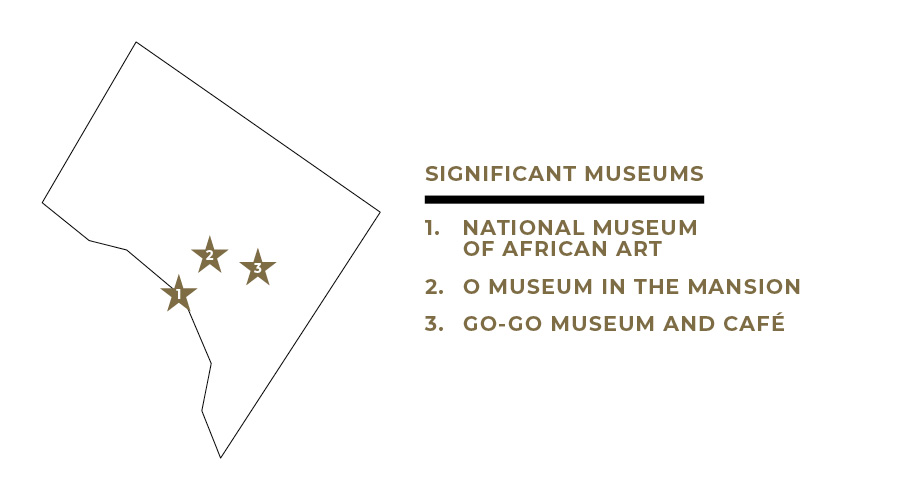
Go-Go Museum and Café
Washington’s newest museum is a jaunty celebration of Go-Go, a mash up of funk, R&B, hip-hop and Afro-Latin rhythms that was declared DC’s official music back in 2020. In early 2025, this small museum opened, dedicating itself to a musical genre that’s been described as a “groove that goes and goes,” and “a powerful expression of joy.”
Many of the 16 exhibits are interactive, so visitors can see and hear big moments in go-go’s history. A stage is ready for live performances; a café is stocked with street food.
In 2026 the museum will celebrate the 50th year of go-go with special events and pop-up exhibits. Self-guided tours are free; guided tours are $20 per person for groups of 10 to 50 and can be scheduled on the website. Box lunches can also be ordered in advance.

O Museum in the Mansion
Two million people have visited the O Museum in the Mansion since it opened 40 years ago. Some say it’s like a funhouse, where the adventure is finding secret doorways and hidden rooms. Others describe its collection of Americana—paintings, photos, books, music and sports memorabilia—as a time capsule of our culture. (By the way, all those items are donated and are for sale, with proceeds to benefit the museum’s programs.)
So how is this oddball museum, housed in connected rowhouses, significant to civil rights?
Most would say it’s the museum’s mindset. It welcomes all; it is blind to racial, gender and social differences; hatred or bigotry are unwelcome. It’s no wonder Rosa Parks made it her home while in the city, often staying in guest quarters that the museum offers to American heroes and artists.
A group can take a self-guided tour through rooms filled with nostalgic objects, searching for the 90 secret doors that lead to more rooms. There are 112 rooms in all.
National Museum of African Art
The National Museum of African Art, on the National Mall, is known for a collection that spans centuries of African art. It’s a striking building, with copper domes and circular windows outside and bright art and a clever design inside.
This gem is now part of the Smithsonian, but originally it was a private collection, housed in a townhouse where Frederick Douglass once lived. Docent-led tours are offered on a regular schedule, and depending on staffing, additional tours are possible.

Fuel Stop: Follow a tour with a foray to DC’s Little Ethiopia and its many Ethiopian restaurants and businesses. More Ethiopians live in the District than anywhere else besides Ethiopia. The capital is rich in Ethiopian food culture, and the Ethiopian influence goes beyond Little Ethiopia. For example, in Adams Morgan, longtime favorite Elfegne (formerly Zenebech) is known for platters that allow guests to taste almost a dozen vegetables and stews using injera, a spongy flat bread, instead of utensils. For upscale Ethiopian dining, try Ethiopic in the H Street corridor.
Educational Institutions

Howard University
Howard University’s impact on the Civil Rights Movement is unquestionable. Its law school has graduated more civil rights attorneys than any other, among them Supreme Court Justice Thurgood Marshall, one of the nine Howard law school graduates and law professors who argued Brown v. Board of Education.
The historic Black college’s ties to civil rights go even deeper, as groups can learn on a self-guided campus tour. A significant stop is Rankin Memorial Chapel, a National Historic Landmark where the school’s first African American president preached against the threats of McCarthyism and racism, and where Martin Luther King Jr. would later speak.
The Founders Library is known for its collection of African American documents, letters and oral histories as well as letters of civil rights activists. And Frederick Douglass Memorial Hall, a classroom building, is named for the Douglass who served as a college trustee for 23 years.
John Philip Sousa Junior High
John Philip Sousa Junior High (now Middle School) reminds us that across the South, concerned parents and civil rights activists took bold steps to desegregate public schools. In 1950, as the then-new school for white children opened, 12 Black students asked to be admitted. The principal turned them away, and a lawsuit was filed on the grounds that such segregation was discriminatory. It and several similar lawsuits became part of Brown v. Board of Education, the basis for the landmark decision that struck down the legality of “separate but equal.” The school, a National Historic Landmark, is not open to the public.
U Street and Black Broadway

Ben’s Chili Bowl
Ben’s Chili Bowl on U Street is more than an eating establishment in a district once known as Black Broadway. Even as the restaurant that Ben and Virginia Ali opened in 1957 built a following for its half smokes (half beef, half pork sausages), the couple earned a reputation as supporters of civil rights. Ben’s fed those who marched in the 1960 Poor People’s Campaign and in 1963’s March on Washington. Duke Ellington, Martin Luther King Jr. and other influential African Americans gathered at Ben’s. Barack Obama popped in when he was president.

Virginia still greets guests as her three sons run the business, now with locations at H street and 10th and Reagan National Airport. Visit the U Street original and try a half smoke topped with yellow mustard, white onions and chili sauce. Ben’s welcomes groups and even has a group coordinator. Because of its popularity, make plans far ahead, especially for weekends. In addition to half smokes, Ben’s serves burgers, chili, sandwiches and salads, but those who want a wider menu and adult beverages might try Ben’s Next Door, also run by the family and literally next door.
Black Broadway Walking Tours
Work off the meal at Ben’s Chili Bowl on a walking tour with Black Broadway Travel, founded by Briana Thomas, a journalist who has written a book about the African American business and entertainment district known as Black Broadway, once home to 300 black-owned businesses, 100 churches and dozens of entertainment spots. Two of those venues remain: the Howard Theatre, the country’s first African American-owned theater, restored and in operation; and the Lincoln Theatre, also restored and open for business, where in its heyday talents like Ella Fitzgerald, Nat King Cole, Louis Armstrong and Sarah Vaughn performed. Both theaters are on the tour, as well as murals of Black leaders and several Black-owned businesses. Tours can be adjusted depending on a group’s time schedule and interests.
